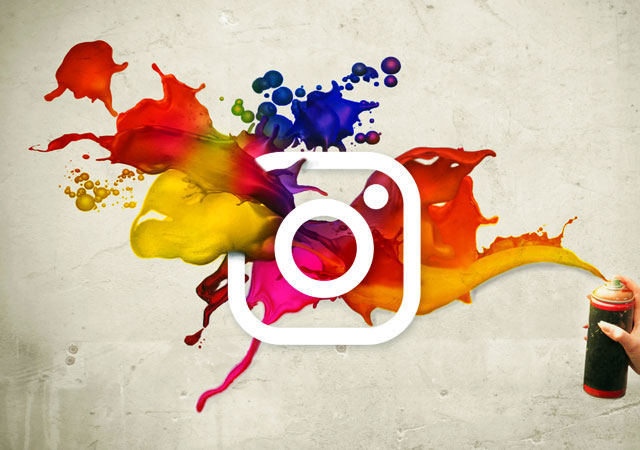
1 thing is clear media is redefining how the art world does business. In the past year, over 80 percent of Generation Y art fine art was purchased by buyers online, with nearly half of buyers utilizing Instagram for functions, revealed Gotham Magazine.
So, how exactly is media weaving its way? From making earnings more easy to sidestepping galleries networking sites are making a statement.
You can
1. Go Directly
"Never before has an artist had the power to enter a conversation directly with their audience," cheers artist Stuart Semple at Gotham Magazine. This power comes in the form of Instagram and Facebook, and we don't think it'll be changing.
Curbing way of communication media allows you speak with your followers about who you are and what you are currently making. Someone can ask about a piece, and it's sold. And, with one fateful"follow," the respected eyes in the industry can consider your work on a daily basis.
Take this example from VICE artists bp laval and Genieve Figgis were posting their artwork Instagram when note was taken by Richard Prince and went on to help them launch their careers, land exhibitions, and more.
One minute artist Dan Lam was teaching at a community college, and the next moment she sent Miley Cyrus a bit and being showcased at Art Basel. Read more about her Instagram success story here.
2. Get Validated With no Gallery
Guess what? The networking boom means artists no longer have to rely on the art world elite and galleries to confirm their achievement. The masses after your networking accounts are evidence enough.
And, a large online presence means your name has been buzzed about, undercutting the need for galleries to spread the word about you. . .today artists utilize Instagram as their own digital art gallery, playing both seller and curator while their fans become critics and collectors..." In other words, whilst gallery representation is still prestigious, it is no longer necessary to go through this middleman.
3. Dodge Gallery Commissions
using social media posts sidestepping dealers and galleries suggests that you don't lose any money on galleries taking commissions. Instead, you collect the full amount and may use Instagram or your Art Archive Public Profile Page as your gallery.
4. Avoid the Eliteness
Gone are the days when artists were required to hobnob with collectors and critics before being able to sell a single slice and make their way. Satisfied with this aspect of the changing the playing field is artist Brad Phillips. He states that Instagram connections are great for artists who do not wish to play the"expensive match the art world requires--more to New York, [and] glad-hand at Art And Social Media today a million openings". What is more, he believes when reaching a huge audience, artists can be themselves on this platform.
While you still have to get out and speak to prospective buyers, you can do so knowing that it is only 1 component of art world, not its entirety.
5. Finance Your Art Projects
In the end, when it comes to financing their dream art projects -- all thanks to media artists have to fret. With eager Facebook and Twitter audiences at the ready, an artist is able to share a link to his or her Kickstarter page and instantly receive gifts from fans and strangers .
Social networking gives fundraising a whole new meaning and lets you spread the word like wildfire.
You may have guessed it that there would be some drawbacks. Alongside all the positives, with this new social networking landscape you...
6. Have Less Control
Not all media impacts are beneficial. A screenshot of your work could be passed around a lot of times your name (and credit for your work) gets lost in the shuffle.
But don't let this deter you! If that is a major concern of yours, add a watermark to your photos with text-adding programs like Quick or a design website like Canva.
Another problem? If it's not done 16, buyers might get turned off by your networking presence. While following these tips to be sure you aren't damaging your online art manufacturer we suggest that showcasing your personality and professionalism.
Now we can't imagine a world with no social media.
The worst thing is hold on before and deny that it's happening. Remember: the conventional art world is changing, for the better but it might be! Social media can assist your art business, providing you with access to wider audiences and easier sales.